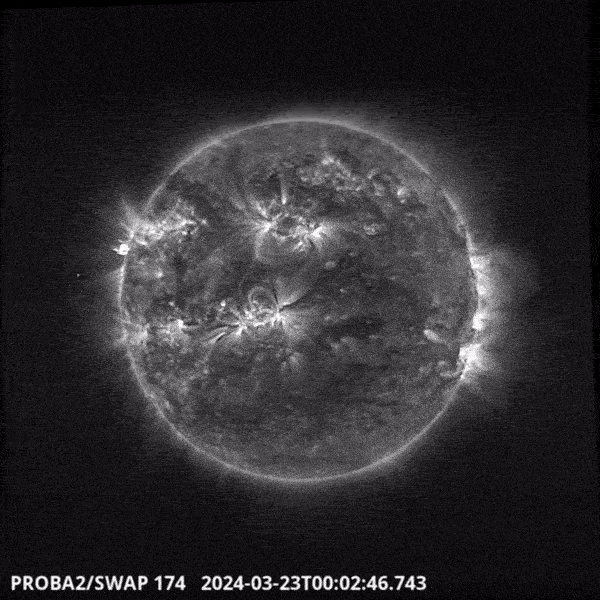

Solar flare captured by ESA’s Proba-2 SWAP
ESA’s Proba-2 SWAP (Sun Watcher with APS detector and Image Processing) was able to capture the solar flare which erupted from the surface of the Sun at 02:31 CET on the morning of 23 March 2024.
The X1.1 solar event, the most powerful possible type, was also associated with a solar particle event and an Earth-directed coronal mass ejection, which had space weather watchers on high alert for signs of the aurora. Coronal mass ejections such as this have the power to take out satellites, communications and Earth infrastructure, which had ESA’s Space Weather Office on alert for potential hazards.
The resulting geomagnetic storm arrived much sooner than anticipated on the afternoon of 24 March 2024 and was registered as severe. Using the Kp index as a metric (a planetary geomagnetic index showing the level of disturbance to Earth’s magnetic field), the storm reached the second highest level possible, Kp 8.
Whilst this geomagnetic storm was relatively short-lived, and there were no major impacts or disturbances reported, the active region of the Sun from which the X-class solar flare erupted would remain potentially hazardous for a number of days following the event on 23 March.
Read full story: SMOS and Swarm team up to spot huge solar storm





